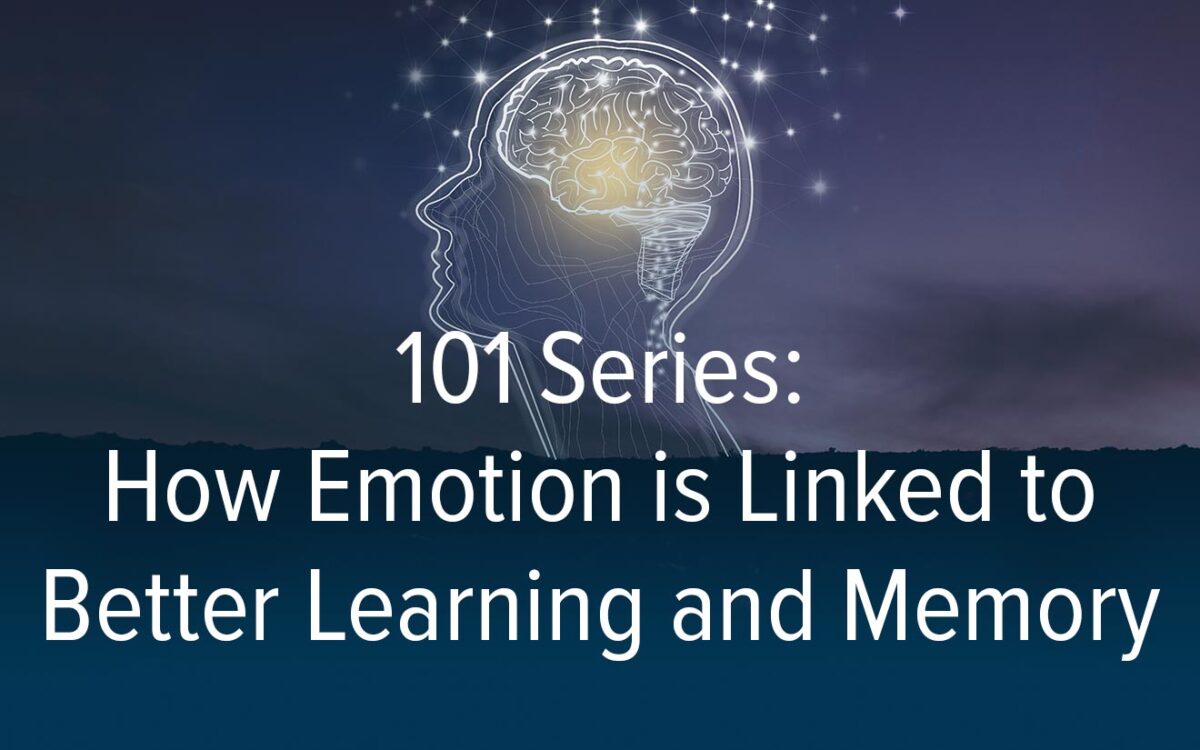
This blog is the fifth of six installments in the “Learning and Memory” series that investigates the science behind learning. Each blog is a bite-sized version of articles written by Amplifire’s chief research officer, Charles Smith. To read the full article, follow the link to “Emotional Triggers for Learning.”
We’ve often been presented with the emotion-versus-logic dichotomy. We’ve been told that emotion is the enemy of rational thought and have been conditioned to value logic over feeling. But, what if all of that is wrong? What if the real relationship between emotion and rationality is not antagonistic, but harmonious instead?
Why are emotions important?
In terms of biology, emotions were (and are) essential to human survival and fitness, from an evolutionary standpoint.
Emotion is the way that organisms apply value to information perceived in the environment. Fear, happiness, alertness, and fatigue are a few of the many feelings that humans experience. They are nature’s method of enabling rapid decision-making, because there is rarely time to mull over the rationality of a life-or-death situation. Emotions are a critical factor in human survival.
Emotions tend to get a bad rap, especially in American society. Culturally imposed stigmas aside, emotions are important not only for evolution, but also on a day-to-day basis when it comes to learning and memory. Emotion usually falls second to “rational thought,” but as it turns out, emotion is the key to making successful or advantageous decisions. Moreover, much of your memory is based on emotionally attached signals, since emotion is the mechanism by which our brains assign value to incoming information. Without emotion — generated by specific neurotransmitters — it would be impossible to distinguish things like safety, danger, confidence, hesitation, behavioral cues, etc. Interacting successfully in the world would be impossible.
How emotion affects memory
The emotions we feel have a significant effect on our memories. Some promote retention, others deter it. The way emotions flare up moderates our experience in the world and our outward behavior, as well. External stimuli cause the release of certain neurotransmitters, which make us feel a certain way. In turn, this makes us act in a certain way and codes our experience to be remembered or forgotten. This chart illustrates the states (aroused, not aroused, negative, positive) prescribed to certain emotions, as well as their subsequent effect on emotion:

When we consider triggers for learning, the neurotransmitters that are involved in strong emotions like fear create the high states of arousal (activation) that we noticed on the circumplex map of emotion. The trick for effective learning is creating activation with positive arousal. These feelings include alert, excited, elated, happy.
Also notice that the aroused, negative feelings still generally allow for memories to be formed, but these memories are not usually cemented in long-term memory. This means that in high stress situations — like ones that often accompany learning scenarios, like studying for an important test — inhibit your ability to retain the things you learn for long.
All states in non-arousal are not conducive to learning new information, and negative, not-aroused feelings are not likely to be retained. This is why the state of an individual’s mental health is important in learning scenarios. Oftentimes, anxious or stressed employees, like nurses, will struggle with training because they are not in an ideal headspace to learn. This is also why we often see depressed students struggle in school. And so on and so forth.
The intricacies of the interaction between neurotransmitters and subsequent emotion coupled with incoming information are endless. However, knowing what conditions are best for information intake and memory can allow us to create more successful circumstances for learning.
How to harness the power of emotion to learn better
Understanding how to tap into the power of your emotions can help you learn better, faster and help you remember more. At Amplifire, we have weaved this power into our learning platform, which is designed to work with the emotions that are most advantageous to learning. This is why our results show that we’re a faster and more effective tool for learning and training. We’re not just preaching it; we’re putting it into practice.
A few examples of powerful emotional learning triggers are confidence, optimism, and arousal (which includes feelings like excitement or intrigue).
A particularly potent emotional tool when it comes to learning new things is the “emotion of knowledge.” In the Amplifire format, feelings of knowing are expressed in terms of doubt, certainty, or ignorance. According to Robert Burton, a neuroscientist at UCSF, the feeling of knowing is a core emotion like love, fear, sadness, or hate. The deeper evolutionary perspective tells us that the feeling of knowing is of utmost importance because it leads directly to behavior.

In terms of faster, more effective learning, the Amplifire platform brings these emotions of knowledge to the forefront of learner’s conscious awareness. For example, when answering a question, learners are asked to indicate if they are sure, unsure, or do not know an answer — without penalty. This obvious expression of the feeling of knowing helps learners encode and store an enduring memory of the information.
Interested in investigating more emotional learning triggers? Check out the full research article “Emotional Triggers for Learning” for more cognitive science discoveries, theories, and scenarios. Next in the series, we’ll go even deeper into brain function by discussing motivational triggers as powerful conditions for learning.
From the beginning, Amplifire has relied on innovative brain science to guide its product development to create the most effective learning and training solution, perfectly tailored to the way the human brain works. Learn more about how Amplifire helps people learn better and faster by scheduling a demo.







